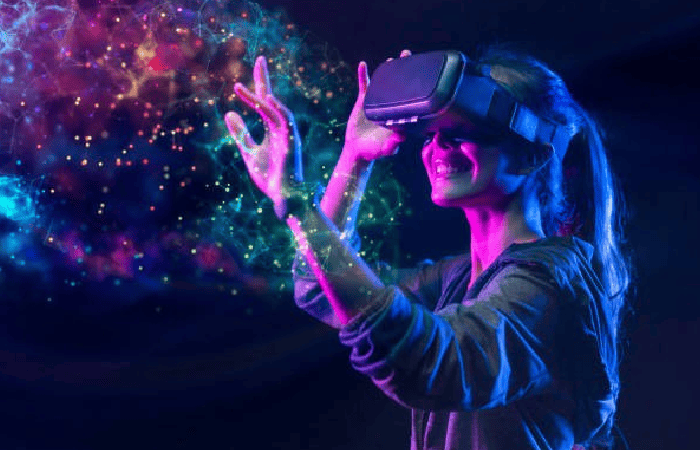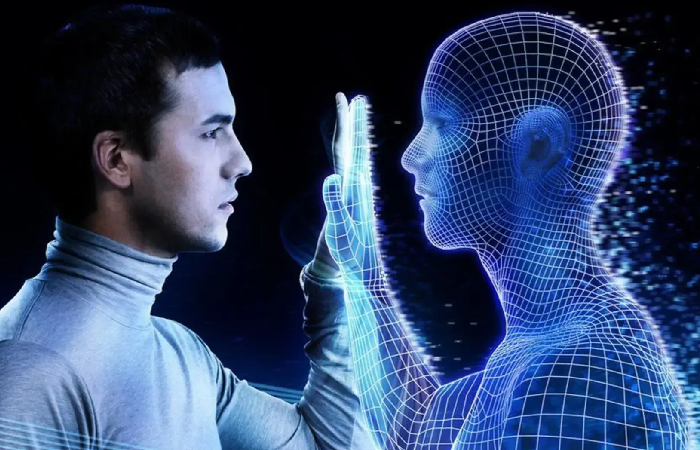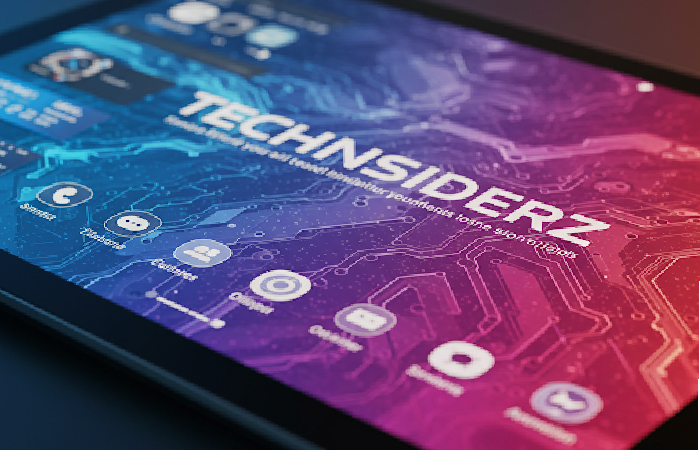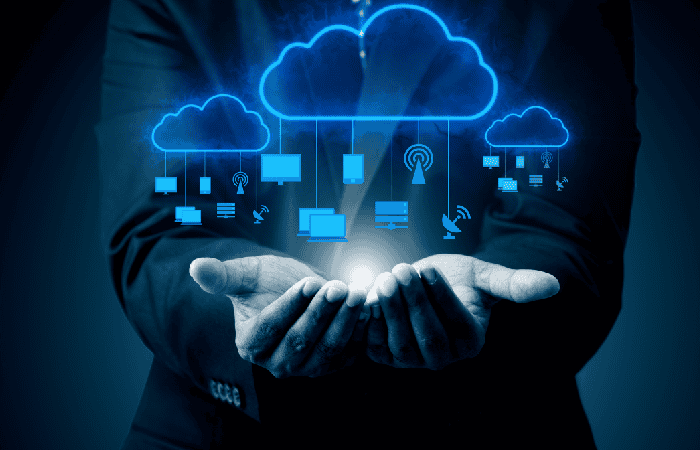Coolest Gadgets 2025 That Makes our Activities Easier

In today's ever-changing digital circumstances, staying ahead of the bend requires keeping up with the most current technical innovations from 2025 and earlier. From cutting-edge innovations in AI and ML to the transformative possibilities of blockchain, innovation in the IT industry is booming. Technology continues to influence our lives and jobs. This affects many industries and enterprises.
Imagine living in a society where autonomous vehicles traverse clogged roads, virtual reality subverts reality, and technology and sustainability creatively coexist.
In this article, we'll look at progressive technological developments that are transforming our digital world and lighting the major tech trends of 2025. From blockchain and artificial intelligence to cybersecurity and extended reality, we examine the key areas of expertise driving change and shaping the course of digital transformation. Are you ready to investigate the technological trends of 2025 that will not only impact but also shape the future? Let's examine some facts on these new technology developments first, though.
Prepare for the Future with Emerging Technological Trends in 2025
One of the basic technological advancements of 2025 is propagative AI, which uses models to produce new material from data, including text, pictures, and audio. By expediting the creation of creative artwork with human-like writing and speeding up the discovery of new drugs, it is changing several industries, including natural language processing, art, music, and healthcare.
Apart from facilitating customized marketing, customized education, and immersive virtual worlds, generative AI also presents ethical dilemmas due to bias and misinformation. Generative AI is a disruptive force in innovation and technology since its automation applications increase productivity across industries and its growth requires interdisciplinary collaboration.
Robotic Process Automation (RPA)
This innovative advancement is increasing the efficiency and automation of repetitive techniques in businesses.
It entails employing "bots" or software robots to do tasks across a range of applications, communicate with digital systems, and mimic human behavior. In the fields of finance, human resources, and customer service, RPA dramatically lowers manual labor, improves accuracy, and speeds up procedures.
It allows for a seamless combination between outdated systems and modern apps, increases effective performance, and frees up associations to focus on higher-value tasks. As it improves, RPA is becoming a progressively important part of digital transformation projects, offering businesses increased productivity and cost savings.
Technology for Digital Twins
It is among the most popular technical developments of 2025. By using Internet of Things (IoT) devices to gather data constantly, digital identical twin technology builds a virtual image of real-world processes, systems, or things. By assisting real-time monitoring, predictive maintenance, and enhanced performance, this technology improves the digital environment.It helps with process optimization, lifecycle management, and improved management making.

Through circumstances simulation and increased working efficiency, digital twins foster innovation and creative business models in a variety of segments, such as manufacturing, healthcare, and smart cities. Furthermore, digital twin technology provides matchless possibilities for improved monitoring, optimization, and modified experiences by merging the digital and physical worlds.
The Quantum Computer
Starting in quantum physics, quantum computing offers a completely new method of computation. Through the concurrent use of quantum bits (qubits) in several states, it offers unique computing power. Technological developments in this area have the potential to radically alter several sectors, including encoding and medicine research, by solving complex problems at a rate never seen before.
Edge computing
Edge computing aims to decentralize processing and storage close to data sources, including Internet of Things devices. It reduces latency for real-time processing in applications like autonomous cars and smart cities. Increased cost-efficiency, privacy, and data security are among the advantages; yet, providing dispersed networks of edge devices continues to provide difficulties. However, it is a substantial change that allows for efficiency and innovation across many industries.
5G Technology
5G is one of the most substantial technical advancements of 2025; it is a disturbing force that is changing telecommunications. 5G is transforming technology with its extraordinary speeds, extremely low latency, and improved network consistency. Its use in a variety of sectors, including software development, healthcare, developed, entertainment, and transport. Creates a whole new range of opportunities.

5G is pushing the limits of innovation as it spreads around the world. It is simple to see how our interactions, jobs, and lifestyles can change in the future because of instant, dependable connections.
Security and Artificial Intelligence
Because of positive tactics like AI-driven solutions and zero-trust architecture, cybersecurity is changing quickly. Threat recognition is improved by AI, and stringent access controls are imposed via zero-trust models. By blocking unwanted access, biometric authentication provides an additional degree of protection. Evolving topics in cybersecurity include proactive measures and multi-layered resistance to protect systems and data.

VR and AR
AR and VR technologies are combined into 2025's top tech trends. These are radical-edge immersive technologies that provide ground-breaking experiences across a range of fields. Learning, shopping, and gaming are all improved by augmented reality (AR), which covers digital data in the physical environment. It opens up new breaks for visualization, entertainment, and education by allowing users to cooperate with virtual components in their real-world situations.
Virtual reality (VR), on the other hand, transfers users to pretended worlds for training, gaming, therapy, and other purposes while engaging them in completely virtual situations. Software and scientific developments are making AR and VR more broadly available, which is supporting innovation in a variety of sectors.
The Internet of Things
The Internet of Things (IoT) is still a major technical development that connects different systems and devices to boost production and accessibility in a variety of sectors. Since it facilitates computerization and integration, IoT services' capacity to provide data exchange and device-to-device connection is essential.
From smart cities and homes to industrial relevance and healthcare, IoT makes it easier to create networked ecologies. Through real-time data analysis, it updates processes, maximizes resource consumption, and supports decision-making. More connectivity, efficiency, and creativity are predicted as IoT technology develops further.
Cloud Computing
In 2025, cloud computing services are anticipated to be a major technological development. It is the most potent technical force, and serverless computing is one of its most recent innovations. Because of this development, developers may now concentrate just on building and circulating code, as foundation admin is no longer necessary. Pay-as-you-go serverless computing is scalable and cautious as it only charges for the resources that are used.

Additionally, it facilitates smarter development cycles, boosts agility, and makes designing microservices-based designs simpler. This pattern points to a move towards cloud-based software development and deployment techniques that are more simplified and effective.
Conclusion
Our digital future is being reshaped by the quickprogress of technology, which is more than simply a passing trend. For people who want to keep up with the latest technical developments, adopting the top trends of 2025 is not an option. These 2025 tech trends, which range from the radical potential of artificial intelligence to the linked promise of the Internet of Things, are not merely estimates of the future; rather, they constitute the foundation of a revolution that is now underway.
Knowledge and flexibility serve as our compass as we negotiate this always-changing sea of alternatives, pointing the way toward a day when technology isn't only a tool but a smooth expansion of our limitless human potential. In this dynamical environment, knowledge and flexibility will act as our compass, pointing us in the direction of a day when technology will easily unlock our infinite potential. For those who dare to accept the swiftly shifting tide of technical innovation, the future is already here.




